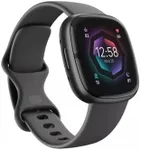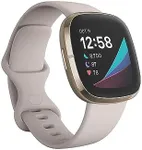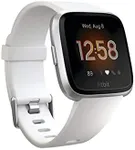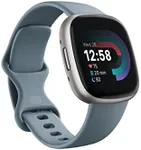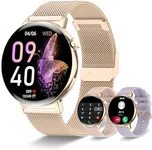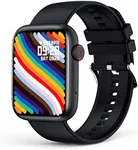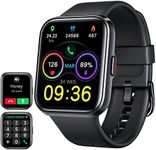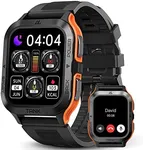Buying Guide for the Best Waterproof Fitbit Watches
When choosing a waterproof Fitbit watch, it's important to consider several key specifications to ensure you get the best fit for your needs. A waterproof Fitbit can be a great companion for swimming, running in the rain, or simply not worrying about accidental splashes. Here are the key specs you should look at and how to navigate them to find the perfect watch for you.Water Resistance RatingThe water resistance rating indicates how well the watch can withstand water exposure. This is crucial if you plan to use the watch while swimming or in wet conditions. Ratings are usually given in meters, such as 50m or 100m. A rating of 50m means the watch can handle swimming in shallow water, while 100m is suitable for more intense water activities like snorkeling. Choose a rating based on your typical water exposure; for casual swimming, 50m is sufficient, but for more rigorous water sports, opt for a higher rating.
Battery LifeBattery life determines how long the watch can operate before needing a recharge. This is important for convenience and ensuring the watch is always ready to use. Battery life can range from a few days to over a week. If you are an active user who tracks workouts and uses GPS frequently, a longer battery life will be beneficial. For occasional use, a shorter battery life may be acceptable. Consider your usage patterns to decide the appropriate battery life for you.
Fitness Tracking FeaturesFitness tracking features include heart rate monitoring, step counting, sleep tracking, and more. These features are essential for monitoring your health and fitness progress. Some watches offer advanced metrics like VO2 max and stress tracking. If you are a fitness enthusiast or have specific health goals, look for a watch with comprehensive tracking capabilities. For general health monitoring, basic tracking features may suffice.
GPS and ConnectivityGPS and connectivity options like Bluetooth and Wi-Fi are important for tracking your location during workouts and syncing data with your smartphone. Built-in GPS allows for accurate distance and pace tracking without needing your phone. If you enjoy outdoor activities like running or cycling, a watch with GPS is beneficial. For indoor activities or basic fitness tracking, GPS may not be as critical. Consider how often you will use location-based features to determine the necessity of GPS.
Display and InterfaceThe display and interface affect how easy it is to interact with the watch. A clear, bright display is important for visibility in different lighting conditions. Touchscreen interfaces are user-friendly, while physical buttons can be more reliable in wet conditions. If you plan to use the watch in various environments, ensure the display is easily readable and the interface is intuitive. Choose based on your preference for touch or button controls and the typical conditions you'll use the watch in.
Comfort and DesignComfort and design are important for ensuring the watch is pleasant to wear throughout the day. The watch should have an adjustable strap and a design that suits your style. Lightweight and ergonomic designs are ideal for all-day wear. If you have sensitive skin, look for hypoallergenic materials. Consider your personal style and comfort preferences to choose a watch that you will enjoy wearing regularly.
